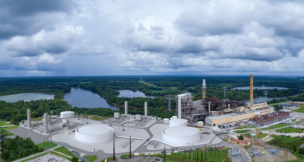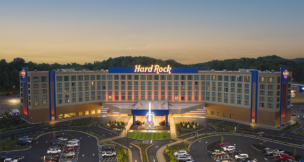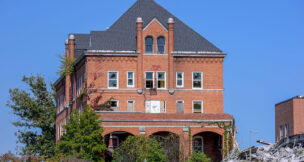22 acres in Innsbrook to be developed into mixed-use
Newton, Massachusetts-based Northland has acquired 22 acres to build a mixed-use development at the “North End” of the Innsbrook area in Henrico County, from Raleigh-based Highwoods Properties. The site is located on the north end of the Innsbrook Corporate Center, at the Intersection of Interstate 95, Nuckols Road and Lake Brook Drive. It already has […]
UPDATED: Richmond picks Diamond District development team
Updated Sept. 15 The city of Richmond announced Monday it has selected a joint venture including Richmond-based Thalhimer Realty Partners to build a new baseball stadium for the Richmond Flying Squirrels, as well as a mixed-use development surrounding the stadium, revitalizing the area into a new neighborhood to be known as the Diamond District. The […]
$55M affordable housing community moves forward in Richmond
The final two phases of Brady Square, a $55 million affordable housing community in Richmond, now have financing and approvals to move forward, developer Dakota Partners announced Tuesday. The Massachusetts developer announced plans for the community in December 2021. Dakota Partners purchased a 14.4-acre parcel at 2200 Brady St. on Richmond’s South Side. The complex […]
Diamonds in developers’ eyes
Standing near the grand entrance of upcoming entertainment venue and food hall The Park at RVA, Orcun Turkay says he’s excited for the future of Richmond’s newly branded Diamond District. He calls it “Scott’s Addition 2.0,” referencing the trendy adjoining neighborhood. Exact plans for the Diamond District, which will include a replacement for the city’s […]
Creating community vibes
In Virginia Beach, most tourists flock to the Oceanfront. But just a couple blocks west, you’ll find an area that feels a little more artsy and a lot more local. In the 15-block ViBe Creative District, situated between the Virginia Beach Convention Center and the Oceanfront, coffee shops and restaurants operate out of former industrial […]
Va. receives $22.7M to reclaim abandoned mine lands
The Virginia Department of Energy will receive $22.7 million in federal funding toward redeveloping abandoned mine lands across the commonwealth, Gov. Glenn Youngkin announced Wednesday. The funding is aimed at redeveloping the sites so that they can be used to attract new development and job opportunities to the region. Handled through Virginia’s Abandoned Mine Lands […]
Silver lining
As the long-delayed phase two opening of Metro’s Silver Line extension is set for later this year in western Fairfax and Loudoun counties, a development boom is following on the train’s wheels. Reston and Herndon, as well as eastern Loudoun, have already attracted big corporate tenants to millions of square feet of office space, retail […]
Carver Station to bring food hall, coworking space to RVA
Future Cities, the development firm behind the anticipated GreenCity development in Henrico County, has plans to renovate a historic substation in the Carver neighborhood of Richmond and turn it into a mixed-use development with a food hall, coworking space and micro retail. Carver Station, which will be located near Clay and Harrison streets, will span […]
‘Novel’ project will add 275 apartments to Scott’s Addition
Crescent Communities, ParkProperty Capital and Thalhimer Realty Partners are developing a 275-unit apartment community in a joint venture on the border of Richmond’s fast-growing Scott’s Addition neighborhood and the city’s planned Diamond District. Dubbed “Novel Scott’s Addition,” the community will be located at the former Wesco Distribution Site at 2902 North[...]
78-unit apartment complex planned for Petersburg
A 78-unit apartment complex will be developed on a four-acre piece of land recently purchased in Petersburg, Colliers announced Thursday. Thalhimer Realty Partners purchased the High Street Land Development from Monroe Properties for $875,000, according to Colliers. Thalhimer will develop the apartments across two phases: With construction starting in 2023, the first phase will feature […]
Richmond names 3 Diamond District finalists
City of Richmond officials announced Tuesday that three development teams have continued to the finals for the Diamond District, which includes replacing the baseball stadium and revitalizing the area near the Scott’s Addition neighborhood. The announcement also gives more details than previously available about the plans submitted by the finalists, which include Richmond Community Developme[...]
A diversified portfolio
In a city where tourism reigns, nothing could be more welcome than a post-pandemic world. And though we’re not quite there yet, Virginia Beach is licking its chops over the prospect of maskless visitors pouring into town. The city, with fingers crossed in hopes that new coronavirus variants don’t arrive before the tourists do, is […]






















